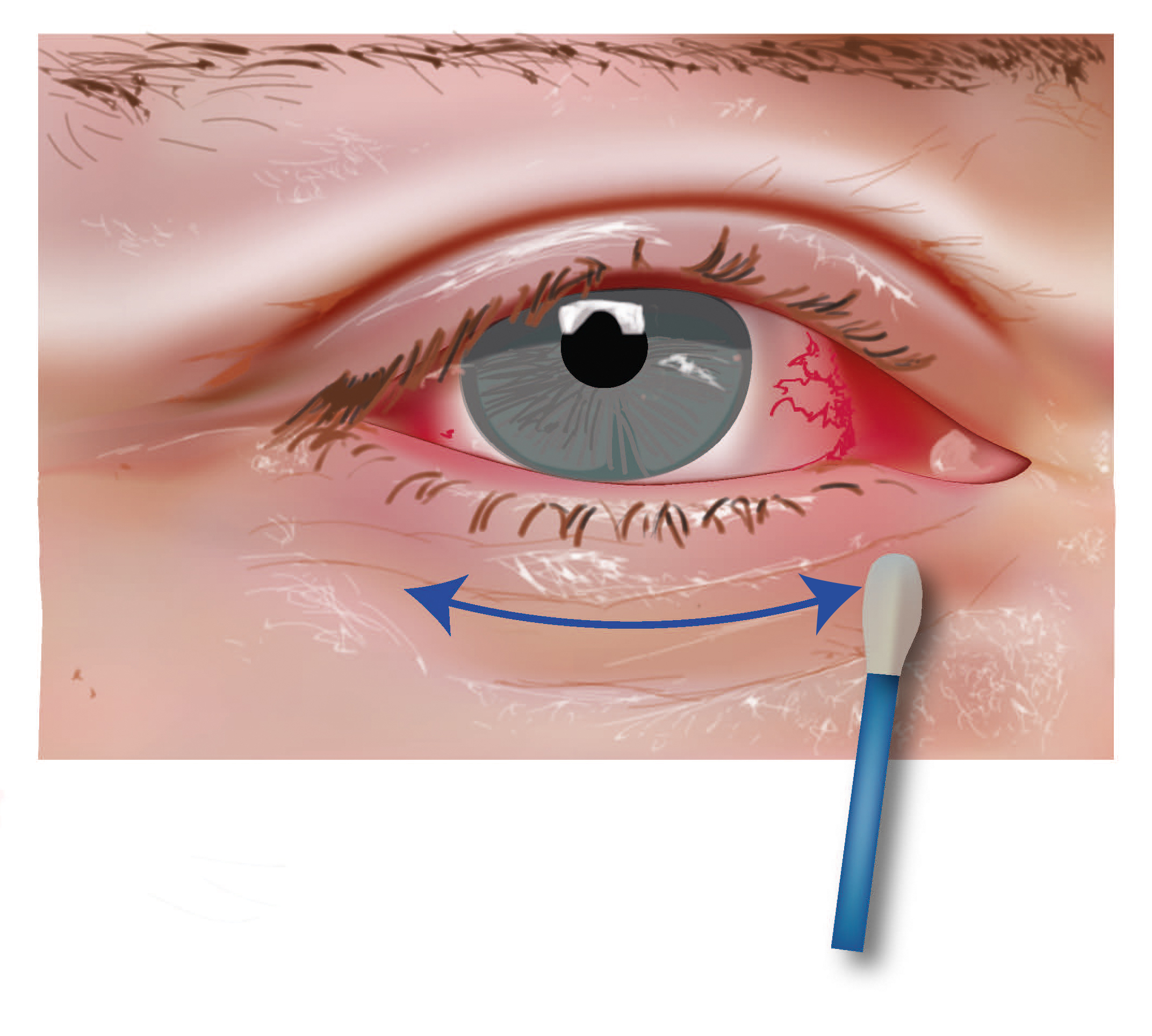Cleaning your eyes before surgery
Information for patients from Ophthalmology
This leaflet has been written as a guide to help you clean your eyelids before eye surgery. Please read the information carefully before you come to hospital for your procedure.
Why have I been given this leaflet?
There are several reasons we may ask you to clean your eyelids, such as early signs of infection when the eye is viewed as minute scales under a microscope or you have been diagnosed with blepharitis. You may not have symptoms but we would not continue with your surgery if we can see any evidence of either condition, as both greatly increase the risk of patients developing an infection after their surgery.
Why do I need to clean my eyes before surgery?
We ask all patients to clean their eyelids before their eye procedure / surgery. This is to prevent any problems at the time of their operation, as infection could be transferred from your eyelids into your eye. This does not guarantee that you will not get an infection, but it will minimise the risks.
Why do I need to do this if I do not have any symptoms?
Sometimes, we have signs of an infection that can be seen under a microscope but that do not cause us any problems.
It is important that you follow these cleaning instructions, so that an infection does not cause you a problem in the future.
Please follow the instructions below when cleaning your eyelids
Hot compresses (if advised by your consultant or nurse)
Soak a clean face cloth in warm water, as warm as your eyelids can take. Apply it to your closed eyelids for five to 10 minutes. It may be necessary to re-heat the cloth repeatedly. This should not only feel good but will make any debris on your lashes easier to remove. Once you have completed stage 1 you need to move onto points 2 or 3 below.Baby shampoo
Dilute four drops of baby shampoo to a quarter cup of boiling water then allow the solution to cool, orBicarbonate of soda
Dissolve half a teaspoon of bicarbonate of soda into half a pint of boiled water then allow the solution to cool.Dip a cotton bud into the solution of diluted shampoo / bicarbonate of soda and paint along your eyelid edges. Clean your eyelids, eyelid edges, and eyelashes with a side to side motion (see image below).

How often should I do this?
To start with, we advise you to use either method at least twice a day for two weeks, then once each day until your eyes feel more comfortable. If you have been given this advice before a surgical procedure, then you should continue the treatment twice a day until your operation.
I have been prescribed anti-inflammatory ointment, how do I apply this?
You may have been prescribed an anti-inflammatory ointment. This will need to be applied to your eyelid edges with a clean finger after the cleaning highlighted above. At bedtime, a quarter of an inch of the ointment should be placed inside your lower eyelid.
The ointment will only work if the crusts around your eye are removed first.
What if I start to show signs of infection before my surgery?
If you show any signs of infection (such as redness, discharge, or itching), that you are not already being treated for, please tell the hospital immediately as we may need to cancel your operation until the problem has been resolved.
What if I have to cancel my operation?
Please ring the waiting list co-ordinator as soon as possible (see phone numbers below).
Contact details
Kent and Canterbury Hospital, Canterbury
Waiting List Co-ordinator Telephone: 01227 866444
Ophthalmology Suite Telephone: 01227 783021
Queen Elizabeth the Queen Mother (QEQM) Hospital, Margate
Waiting List Co-ordinator Telephone: 01843 234364
Day Surgery Telephone: 01843 234458
William Harvey Hospital, Ashford
Waiting List Co-ordinator Telephone: 01233 616757
Channel Day Surgery Telephone: 01233 616263